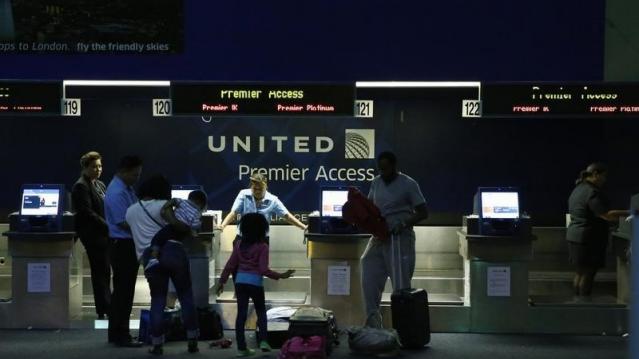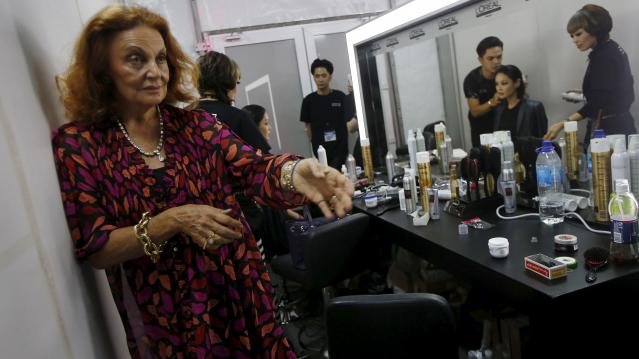Trump Diverting $3.6 Billion from Military to Build Border Wall

The Department of Defense has approved a plan to divert $3.6 billion to pay for the construction of parts of President Trump’s border wall, Defense Secretary Mark Esper said Tuesday. The money will be shifted from more than 100 construction projects focused on upgrading military bases in the U.S. and overseas, which will be suspended until Congress provides additional funds.
In a letter addressed to Senator James Inhofe, chair of the Armed Services Committee, Esper said that in response to the national emergency declared by Trump earlier this year, he was approving work on 11 military construction projects “to support the use of armed forces” on the border with Mexico.
The $3.6 billion will fund about 175 miles of new and refurbished barriers (Esper’s letter does not use the term “wall”).
Esper described the projects, which include new and replacement barriers in San Diego, El Paso and Laredo, Texas, as “force multipliers” that, once completed, will allow the Pentagon to redeploy troops to high-traffic sections of the border that lack barriers. About 5,000 active duty and National Guard troops are currently deployed on the border.
Months in the making: Trump’s declaration of a national emergency on the southern border on February 15, 2019, came in the wake of a showdown with Congress over funding for the border wall. The president’s demand for $5.7 billion for the wall sparked a 35-day government shutdown, which ended when Trump reluctantly agreed to a deal that provided $1.375 billion for border security. By declaring a national emergency, Trump gave the Pentagon the legal authority to move billions of dollars around in its budget to address the purported crisis. Legal challenges to the emergency declaration are ongoing.
Conflict with lawmakers: Congress passed a resolution opposing the national emergency declaration in March, prompting Trump to issue the first veto of his presidency. Democrats on the House Appropriations Committee reiterated their opposition to Trump’s move Tuesday, saying in a letter, “As we have previously written, the decision to take funds from critical military construction projects is unjustified and will have lasting impacts on our military.”
Majority Leader Steny H. Hoyer was more forceful, saying in a statement, "It is abhorrent that the Trump Administration is choosing to defund 127 critical military construction projects all over the country … and on U.S. bases overseas to pay for an ineffective and expensive wall the Congress has refused to fund. This is a subversion of the will of the American people and their representatives. It is an attack on our military and its effectiveness to keep Americans safe. Moreover, it is a political ploy aimed at satisfying President Trump's base, to whom he falsely promised that Mexico would pay for the construction of an unnecessary wall, which taxpayers and our military are now being forced to fund at a cost of $3.6 billion.”
A group of 10 Democratic Senators said in a letter to Esper that they “are opposed to this decision and the damage it will cause to our military and the relationship between Congress and the Department of Defense.” They said they also “expect a full justification of how the decision to cancel was made for each project selected and why a border wall is more important to our national security and the well-being of our service members and their families than these projects.”
Politico’s John Bresnahan, Connor O'Brien and Marianne LeVine said the diversion will likely be unpopular with Republican lawmakers as well. Republican Senators Mike Lee and Mitt Romney expressed concerns Wednesday about funds being diverted from their home state of Utah. "Funding the border wall is an important priority, and the Executive Branch should use the appropriate channels in Congress, rather than divert already appropriated funding away from military construction projects and therefore undermining military readiness," Romney said.
The Pentagon released a list of construction projects that will be affected late on Wednesday (you can review a screenshot tweeted by NBC News’ Alex Moe here).
An $8 billion effort: In addition to the military construction funds and the money provided by Congress, the Trump administration is using $2.5 billion in drug interdiction money and $600 million in Treasury forfeiture funds to support the construction of barriers on the southern border, for a total of approximately $8 billion. (More on that here.)
The administration reportedly has characterized the suspended military construction projects as being delayed, but to be revived, those projects would require Congress approving new funding. House Democrats have vowed they won’t “backfill” the money.
The politics of the wall: Trump has reportedly been intensely focused on making progress on the border wall, amid news that virtually no new wall has been built during the first two and a half years of his presidency. Speaking to reporters at the White House Wednesday, Trump said that construction on the wall is moving ahead “rapidly” and that hundreds of miles will be “almost complete if not complete by the end of next year … just after the election.”
Can Anyone Stop the $38 Billion Airline Fee Squeeze?

U.S. airlines earned $2.6 billion in fees and frequent flier mile sales in 2014, an 18.7 percent increase from 2013, according to an annual report by consultancies IdeaWorks and CarTrawler.
That represents the eighth consecutive year that carriers saw substantial revenue ancillary to ticket sales. Globally, ancillary revenue soared more than 20 percent to $38.1 billion.
“Ancillary revenue is an increasingly important indicator of commercial success, and a major contributor to the bottom line of airlines across the globe,” said Michael Cunningham, CarTrawler’s Chief Commercial Officer, in a statement.
Related: 6 Sneaky Fees that Are Making Airlines a Bundle
By passenger, additional revenue grew by 8.5 percent to $17.49. Low cost carriers increased ancillary revenue by 32.8 percent for the year, or $2.9 billion.
Ten airlines earned two-thirds of the ancillary revenue, led by United Airlines, American/U.S. Airways, and Delta. Delta brought in $350 million through its Comfort Plus program, which allows passengers to pay extra for more legroom and priority boarding.
Among passengers’ most hated fees are checked bag fees. Airlines typically charge $25 for the first bag, $35 for the second, and more than $100 for a third bag.
As frequent fliers turn to branded credit cards as a means of avoiding fees, airlines are still earning money. Last year, American’s Citibank-issued credit card, which gives consumers one free checked bag and priority boarding, yielded an additional $624 million for the carrier last year.
The additional fees are not improving the customer experience. More than 60 percent of consumers surveyed by the U.S. Travel Association in March said they were frustrated with air travel generally.
Memo to Michelle Obama: Americans Still Aren’t Eating Their Greens

Maybe First Lady Michelle Obama should refocus her healthy eating campaign more on adults than children. Fewer than 20 percent of American adults are eating enough fruits and vegetables, newly released data from a Centers for Disease Control and Prevention survey.
The United States Department of Agriculture’s nutrition guidelines recommend that Americans have two to three cups of vegetables every day, along with 1.5 to two cups of fruit. Based on those criteria, only 13 percent of adults in the survey ate enough fruit and a meager 9 percent of individuals ate enough vegetables. These numbers are worse than in years past. Between 2007 and 2010, 76 percent of Americans didn’t consume the recommended amount of fruit and 87 percent failed to eat enough vegetables.
Related Link: The 11 Worst Fast Food Restaurants in America
What’s more, while consumption of fruits and vegetables varies substantially from place to place, the residents of each and every state in the union fell short of the USDA recommendations. In Tennessee, 7.5 percent of residents consume enough fruit, while in Mississippi, a mere 5.5 percent of individuals eat enough vegetables. California ranked highest for eating both fruits and vegetables, but even there, just about 18 percent eat enough fruit and 13 percent eat enough veggies.
“Substantial new efforts are needed to build consumer demand for fruits and vegetables through competitive pricing, placement, and promotion in child care, schools, grocery stores, communities, and worksites,” the CDC report says.
The report comes out after a study published in last month’s JAMA Internal Medicine found that fewer than one-third of Americans are currently at a healthy weight. The majority of individuals are either overweight or obese.
Diane von Furstenberg Will Sell a Purse that Charges Your Phone

Fashion mogul Diane von Furstenberg said she will launch a high-tech purse that automatically—and cordlessly—charges smartphones.
The purse, which does not yet have a price tag, will go on sale in limited edition this holiday season, before rolling out broadly next year. The designer is working with an undisclosed technology partner on the handbag.
"My role in fashion is really solution driven," von Furstenberg said. "I'm always on the go, so [it's important] you have everything at the right time."
The idea of creating a handbag that charges a smartphone isn't entirely new. Kate Spade recently announced that it will launch a similar product line this fall.
Related: 16 Must-Have Products to Make Your Home Smarter Right Now
Von Furstenberg, a regular in Sun Valley, Idaho, took the stage at this year's Allen & Co. conference for a panel on the future of fashion, along with Spanx founder Sara Blakely.
She's there to meet with technology companies as she works to bring fashion into the future.
"Technology is the biggest revolution," von Furstenberg said. "It's such a big part of our lives, we do everything with technology, so it's not even separate anymore. It just is."
Related: 10 Biggest Tech Flops of the Century
Though she doesn't wear an Apple Watch, the designer said she's also interested in wearable technology. At her New York Fashion Week show in September 2012, she sent models down the runway wearing Google Glass.
But von Furstenberg cautions the term "wearable tech" will soon become obsolete.
"Wearable technology won't even be a word anymore, because everything you do will have technology," she said.
Von Furstenberg added that technology isn't just important for the future of fashion products—it's already crucial to their marketing.
"If you're interested in millennials, everyone is on social media and everyone is a brand," she said. "It's very interesting to brands to see how they can work with a generation, who each of them is [their own] brand."
This article originally appeared on CNBC.
Read more from CNBC:
For an airline upgrade, miles aren't the best
How movie theaters are striking back against Netflix
14 retailers shaking up the industry
Corporate Sponsors Pass on Women's World Cup Ticker-Tape Parade

While the country celebrates the U.S. Women’s Soccer team’s World Cup Championship with a New York City ticker tape parade, corporations have been reluctant to pony up cash to cover the $2 million celebration.
Major League Soccer, Nike, fod company Mondelez and video game giant Electronic Arts have contributed a total $450,000 toward the parade, leaving New York City to cover the difference, the New York Post reports. That includes the cost of cleanup and security.
By contrast, the 2012 parade that celebrated the New York Giants winning the Super Bowl had more than a dozen corporate sponsors.
Related: For World Cup Hero Carli Lloyd, 16 Minutes Can Mean Millions
City officials told the Post that the dearth of sponsors reflected the short period of time in which the city pulled together plans for the parade. The team is the first women’s squad to receive a New York City ticker tape parade, although the city has honored individual women, such as Olympic athletes and Amelia Earhart.
More than 12,000 people entered a lottery for tickets to the parade, which will feature the team atop patriotic floats moving down the Canyon of Heroes in lower Manhattan as spectators throw confetti from surrounding buildings.
While companies may not have shown much interest in the parade, they are clearly interested in star Carli Lloyd. Her agent has repeatedly received more than 200 inquiries from marketers who want to work with the athlete.
That’s good news for Lloyd, who like all other National Women’s Soccer League players, is subject to a $37,800 salary cap, about one 10th of what the average male Major League Soccer player makes in a year.
Corporate Sponsors Didn't Kick in Much for Women's World Cup Parade

While the country celebrates the U.S. Women’s Soccer team’s World Cup Championship with a New York City ticker tape parade, corporations have been reluctant to pony up cash to cover the $2 million celebration.
Major League Soccer, Nike, fod company Mondelez and video game giant Electronic Arts have contributed a total $450,000 toward the parade, leaving New York City to cover the difference, the New York Post reports. That includes the cost of cleanup and security.
By contrast, the 2012 parade that celebrated the New York Giants winning the Super Bowl had more than a dozen corporate sponsors.
Related: For World Cup Hero Carli Lloyd, 16 Minutes Can Mean Millions
City officials told the Post that the dearth of sponsors reflected the short period of time in which the city pulled together plans for the parade. The team is the first women’s squad to receive a New York City ticker tape parade, although the city has honored individual women, such as Olympic athletes and Amelia Earhart.
More than 12,000 people entered a lottery for tickets to the parade, which will feature the team atop patriotic floats moving down the Canyon of Heroes in lower Manhattan as spectators throw confetti from surrounding buildings.
While companies may not have shown much interest in the parade, they are clearly interested in star Carli Lloyd. Her agent has repeatedly received more than 200 inquiries from marketers who want to work with the athlete.
That’s good news for Lloyd, who like all other National Women’s Soccer League players, is subject to a $37,800 salary cap, about one 10th of what the average male Major League Soccer player makes in a year.
